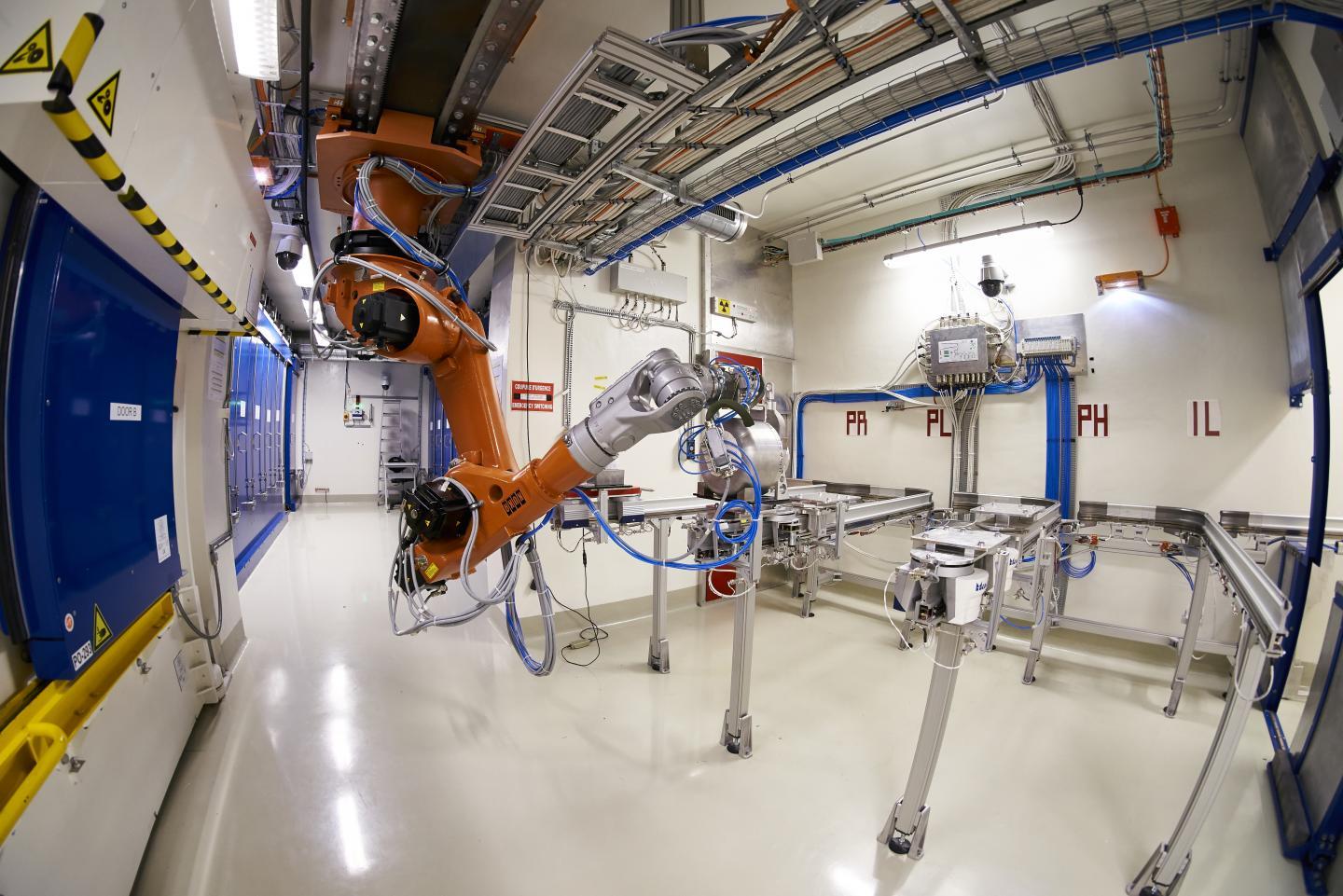CERN’s Know-How
- On-site production of isotopes, with a unique capability to produce unconventional medical radioisotopes.
- Over 50 years of experience in development of PET technologies.
- Expertise in the design and characterization of particle detectors for applications that require fast timing and high spatial resolution, suitable for gamma, PET and SPECT imaging.
- Significant know-how in the design, integration and testing of fast, low noise, low power consumption and radiation-hard multichannel electronics.
Facts & Figures
- 1977: First PET image taken at CERN.
- >1300 unique isotopes produced by CERN.
- 70ps: short coincidence time measured with PET detectors.
- 4T: Magnetic field tolerant detector technology.
Value Proposition
Read more about Nuclear Medicine here.
Key Competences
Detecting scintillator-based detectors
Scintillators are applied in high-energy physics to measure the energy of particles that are produced in particle physics experiments. Therefore, CERN developed highly specialized expertise and infrastructure for research and development of inorganic scintillation technologies for novel ionizing radiation detectors.
System integration
CERN has expertise in integration of diverse technologies for complex detector systems. Maximising the volume dedicated to the detector itself, whilst minimizing the volume for auxiliaries’ services is crucial.
Using Monte Carlo simulation tools
Significant expertise in using and developing Monte Carlo methods to simulate particle transport and the interaction of particles with matter. Substantial know-how in the application of these methods to medical applications.
Rad-hard electronics
To withstand the level of radiation present in the collision points, unique expertise designing and integrating high performance and extreme radiation tolerant ASICs has been built. Broad range of testing and qualifying capability for radiation hardness of ASICs. Designed in a large collaborative team.
Mixed-mode electronics
At CERN, we need our chips to be extremely reliable (several years of continuous operation) and low maintenance (difficult to access when installed). Therefore, designers are pushing the limits of mixed-mode circuit design for large detector systems with 100 millions of parallel operation channels requiring ns timing synchronisation.
Key Applications
Medipix chip family
A family of pixel detector read-out chips for particle imaging and detection, developed by a consortium lead by CERN. Medipix works like a camera, detecting and counting each individual particle hitting the pixels. This enables high-resolution, high-contrast, noise hit free images. The Medipix chip family aims at frame-based imaging and spectroscopic x-ray imaging.
Timepix chip family
By using ASICs that can accurately measure time, one can directly reconstruct the 3D track of passing charged particles. Timepix is a family of pixel detector read-out chips for particle imaging and detection developed by a consortium lead by CERN. The Timepix family is designed for detection with ns resolution with a data driven architecture (last version).

